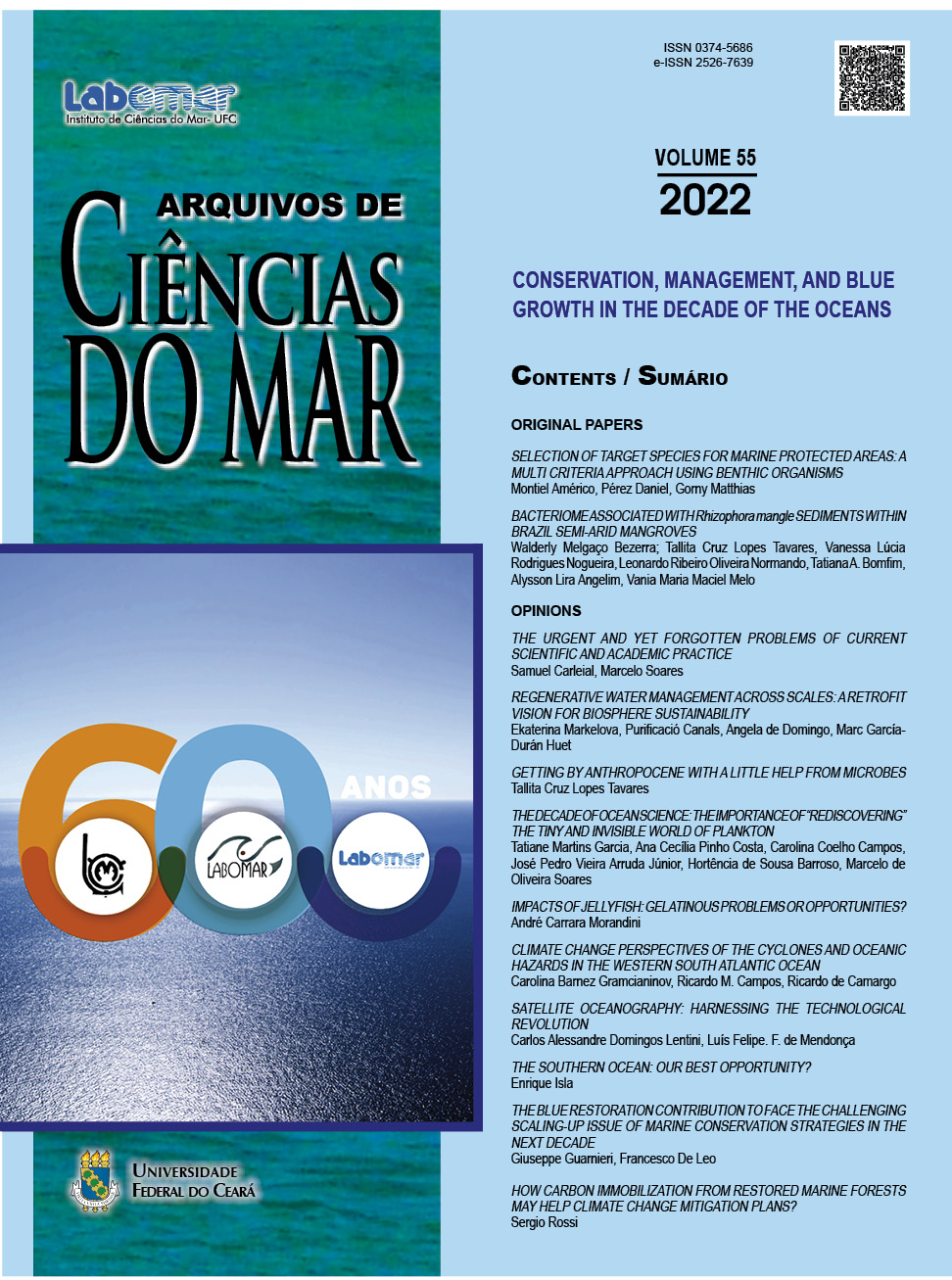ENVIRONMENTAL DNA IN AN OCEAN OF CHANGE: STATUS, CHALLENGES AND PROSPECTS
DNA ambiental em um oceano de mudanças: status, desafios e perspectivas
DOI:
https://doi.org/10.32360/acmar.v55iEspecial.78188Abstract
Environmental DNA (eDNA) studies have burgeoned over the last two decades and the application of eDNA has increased exponentially since 2010, albeit at a slower pace in the marine system. We provide a literature overview on marine metazoan eDNA studies and assess recent achievements in answering questions related to species distributions, biodiversity and biomass. We investigate which are the better studied taxonomic groups, geographic regions and the genetic markers used. We evaluate the use of eDNA for addressing ecological and environmental issues through food web, ecotoxicological, surveillance and management studies. Based on this state of the art, we highlight exciting prospects of eDNA for marine time series, population genetic studies, the use of natural sampler DNA, and eDNA data for building trophic networks and ecosystem models. We discuss the current limitations, in terms of marker choice and incompleteness of reference databases. We also present recent advances using experiments and modeling to better understand persistence, decay and dispersal of eDNA in coastal and oceanic systems. Finally, we explore promising avenues for marine eDNA research, including autonomous or passive eDNA sampling, as well as the combined applications of eDNA with different surveillance methods and further molecular advances.
Keywords: environmental DNA, DNA metabarcoding, marine metazoa, biodiversity, population genetics, natural sampler DNA, diet analysis.
Downloads
Published
Issue
Section
License
Copyright (c) 2022 Arquivos de Ciências do Mar

This work is licensed under a Creative Commons Attribution 4.0 International License.
1. Proposta de Política para Periódicos de Acesso Livre
Autores que publicam nesta revista concordam com os seguintes termos:
- Autores mantém os direitos autorais e concedem à revista o direito de primeira publicação, com o trabalho simultaneamente licenciado sob a Licença Creative Commons Attribution que permite o compartilhamento do trabalho com reconhecimento da autoria e publicação inicial nesta revista.
- Autores têm autorização para assumir contratos adicionais separadamente, para distribuição não-exclusiva da versão do trabalho publicada nesta revista (ex.: publicar em repositório institucional ou como capítulo de livro), com reconhecimento de autoria e publicação inicial nesta revista.
- Autores têm permissão e são estimulados a publicar e distribuir seu trabalho online (ex.: em repositórios institucionais ou na sua página pessoal) a qualquer ponto antes ou durante o processo editorial, já que isso pode gerar alterações produtivas, bem como aumentar o impacto e a citação do trabalho publicado (Veja O Efeito do Acesso Livre).

